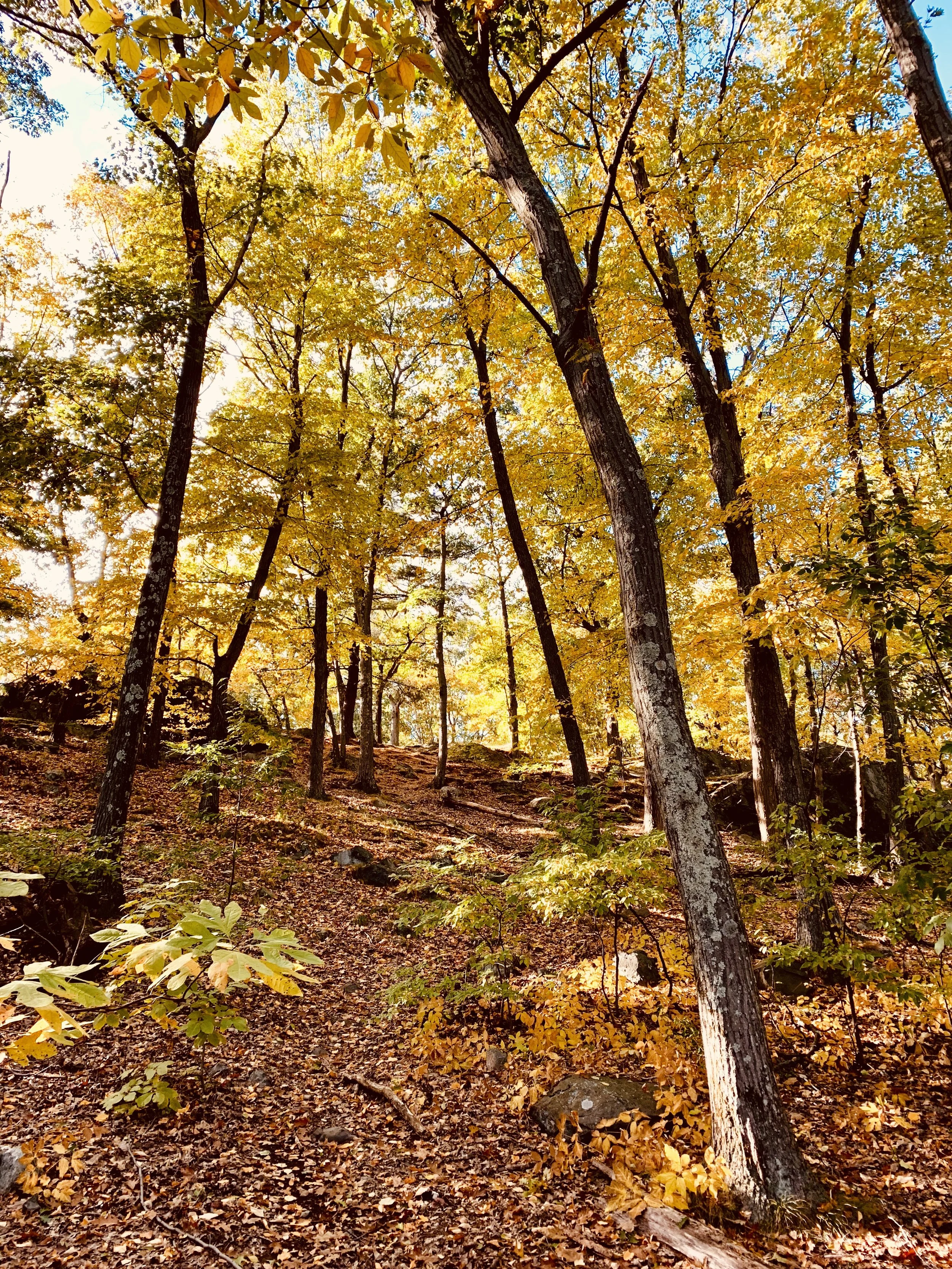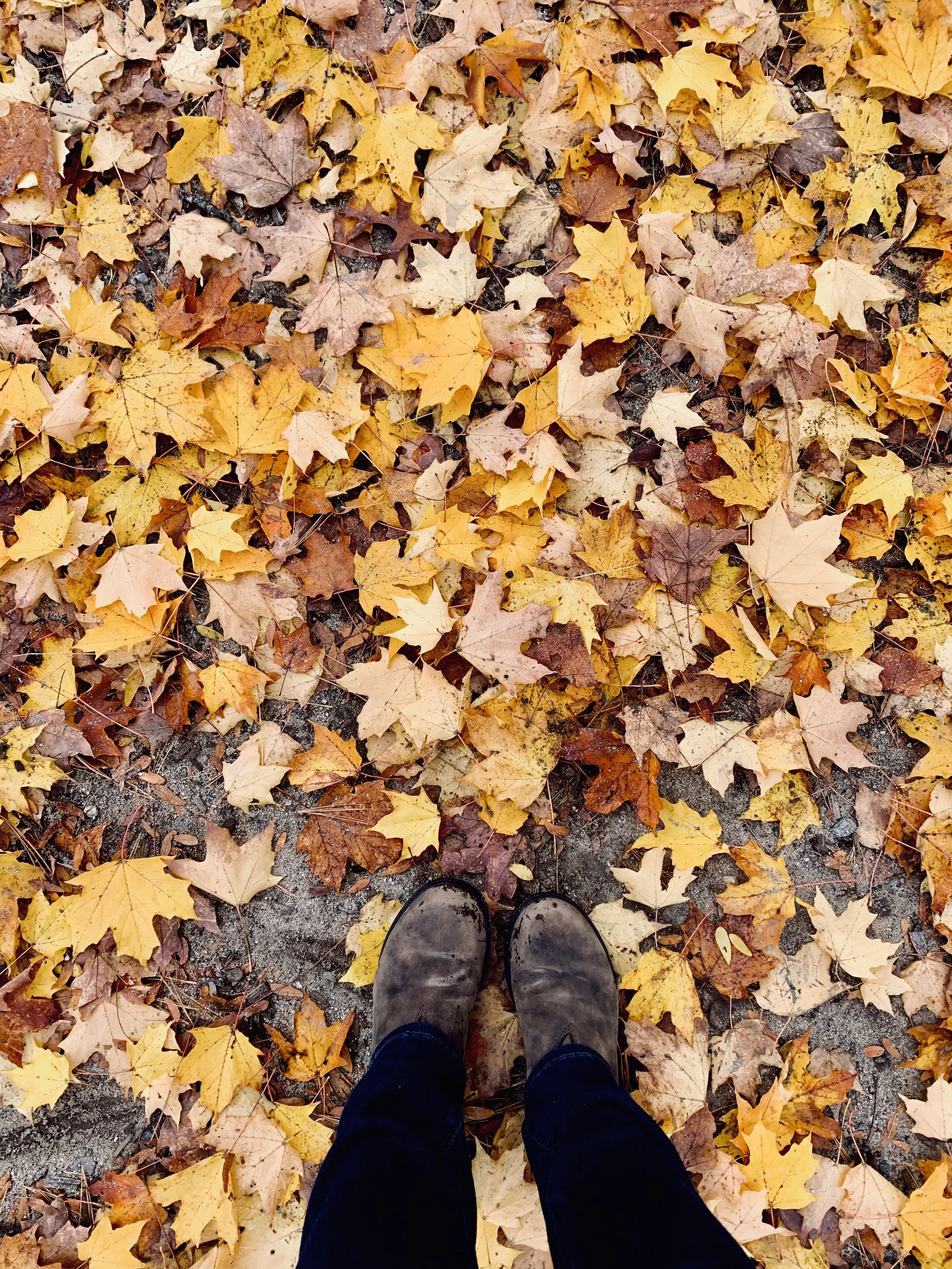Menotomy Rocks Park, Arlington, Massachusetts
Autumn gifts us with the beauty of dying leaves, or, in the words and ideas of Rebecca Solnit in her book Hope in the Dark: Untold Histories, Wild Possibilities, the reminder that beauty and bereavement can sometimes intertwine. In Massachusetts where I live, during this liminal season between summer and winter, the landscape starts to turn golden, She puts on her golden Crown.
What this season reminds us of is how feelings of grief and loss (and the dying of the leaves) can be felt at the same times as we experience something beautiful and joyful (the vibrant golden colors of the leaves) and how this complex combination of opposites is often at the heart of our human experience. In fact, this particular theme weaves its way through many ancient folktales showing us that humans have been contending with this contradiction and paradox since the beginning of time. Here are three that are dear to my heart.
Selkie is a folktale from Ireland, Scotland and the Faroe Islands about a shapeshifting seal woman who falls in love with a human, but as time passes she loses her skin and begins to die. The story is about the difficult choice she must make to leave her child in order to reclaim her skin, and live again. It is about deep loss on so many levels, but it is also a story about reclaiming worth. The Selkie’s decision to put back on her pelt and leave her child to return to the ocean where she belongs marks a turning point in the story and shows how the Selkie has transformed. Before the choice she is a passive victim of theft and plays the role of mother and spouse at the sacrifice of herself and vitality, whereas after the choice she becomes an active agent by choosing to put herself first. It is a heartbreaking choice to have to make, yet making that choice reveals the pelt’s worth, it reveals her own worth. We can derive an additional meaning to this choice by using a less literal, more symbolic interpretation of the story. As mentioned in my blog about the Selkie, the fact that it was the Selkie’s child who found the pelt leads me to believe that the story may be speaking about the Selkie’s own Inner Child. Often when we become adults we lose touch with our Inner Child. For example, we may choose routine over spontaneity, skepticism over hope and trust; safety over healthy risk-taking, and as a result we can feel a lack of vitality. If we reconnect with our Inner Child and are open to the gift our Inner Child offers us, we can reclaim the Self that has been lost and feel a sense of wholeness again.
Baba Yaga & the Falcon is a Slavic folktale about how a young girl must leave her family and social expectations that pressure her to lead a domestic life in order to venture into the wild and find her True Self, symbolically represented by a Falcon. It is a story about how venturing into the dark woods and learning from an old witch (a woman who defies all feminine gender expectations, is totally undomesticated!) gave her the skills she needed to unite with her Falcon and become who she truly is. Like the folktale of the Selkie, it is a story about loss of family and the discovery and recovery of the True Self and how these two are in tension with each other. Both folktales are a celebration of the main character’s transition or rite-of-passage from one stage of life to another, and shows us how there is always going to be some kind of loss involved when something new is birthed.
The Weaver of the World is an Apache folktale about how an elderly woman weaves together the world while a Trickster Crow picks on the loose threads unraveling it again and this continues for eons and eons. Like the concept of Yin and Yang, this story reminds us that creation and destruction work in tandem with each other. Both are necessary and vital to reaching a sense of wholeness and purpose.
What we learn from all three folktales is that the characters feel a tension between seemingly opposite feelings and pressures. Yet the real gift we are offered in learning about each of their journeys is recognizing that both beauty, creation, meaning, purpose as well as grief and loss are part of the same experience. Very similar to the ancient Japanese art of kintsukuroi, or repairing and filling the cracks in broken old pottery with gold which transforms something wounded or flawed into something of great value, it expands our sense of what beauty can encompass, and allows us to still see the meaning and worth in imperfection and loss. “When we come in contact with this kind of beauty, it serves as a medicine for the brokenness in ourselves, which then gives us the courage to live in greater intimacy with the world’s wounds” says Tokopa, author of Belonging: Remembering Ourselves Home.
The word “Belonging” comes from the Middle English word “be” (an intensifier) and “long” (based on the Old English gelang meaning ‘together with’). Perhaps what all three of these folktales are pointing to is the fact that Beauty and Bereavement have always belonged to each other. It is this combination of opposites, the integration of all the inevitable pains, woundings and losses as well as the beauty of creation that enables us to bear the weight of the world. . . Profound wisdom revealed in three folktales that center around a human relationship with a seal, a falcon and a crow.
Leaves on the sidewalk in my neighborhood, Massachusetts
References:
Pinkola-Estes, Clarissa (1996). Women Who Run With the Wolves: Myths and Stories of the Wild Woman Archetype. Ballantine Books.
Solnit, Rebecca (2016). Hope in the Dark: Untold Histories, Wild Possibilities. Haymarket Books
Turner, Tokopa (2017). Belonging: Remembering Ourselves Home. (pp. 163, 165)










In these shadowed and fractured times, when visions of one world rise against one another, we must remember the Sacred Seamstress who eternally weaves worlds back into belonging. She appears as Na'ashjé'ii Asdzáá, Spider Grandmother of the Navajo, or as Amaterasu Omikami, the Japanese Shinto sun goddess, or the Valkyries of Norse legend just to name a few . . .This feminine archetype dwells in the shadows wearing a thousand forms and names. Perhaps she awaits within you? Now is the time to call her forth, and she will rise; nourish her, and she will flourish. Explore a few of her many faces and wisdoms in this blog.